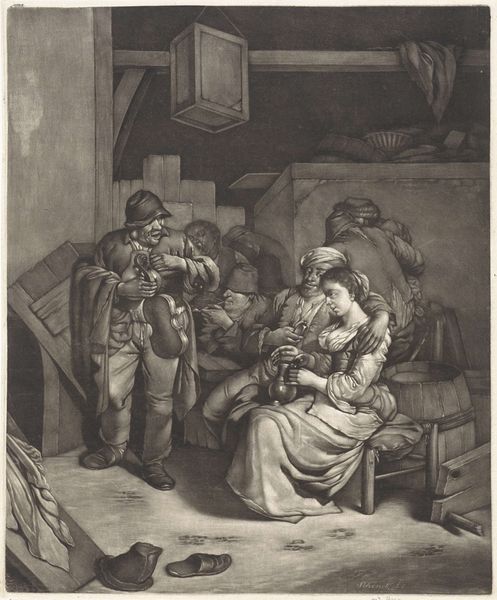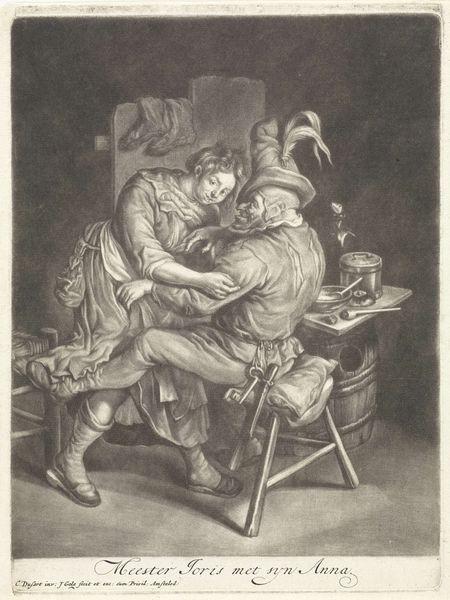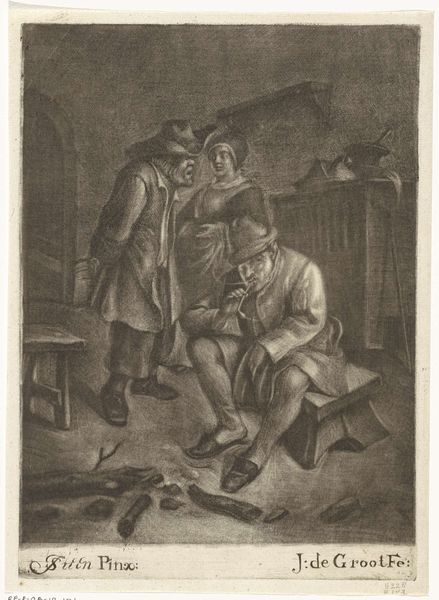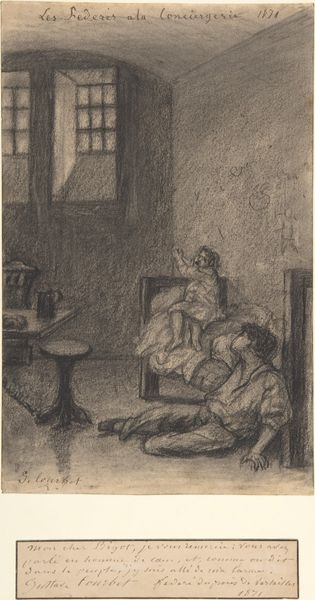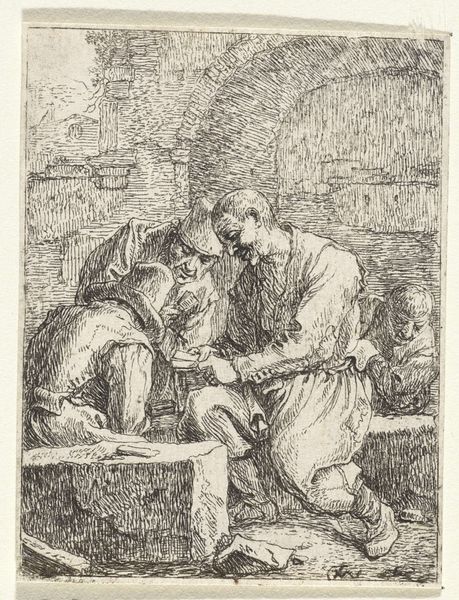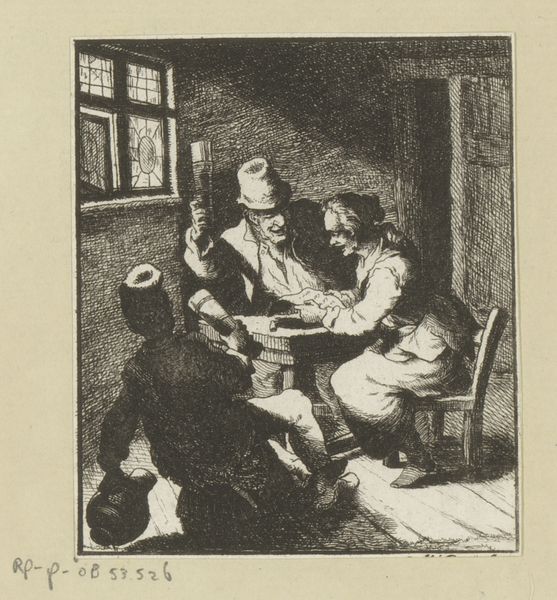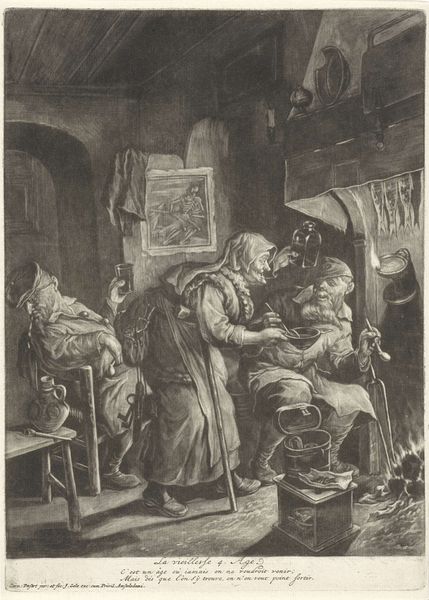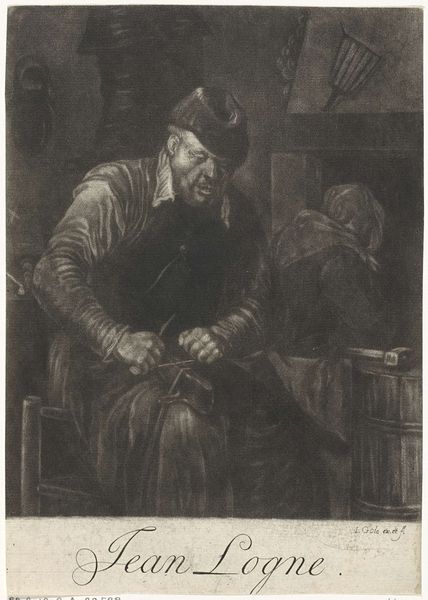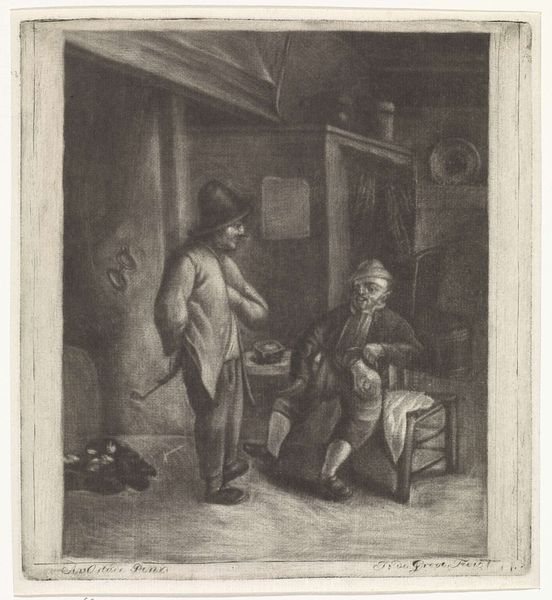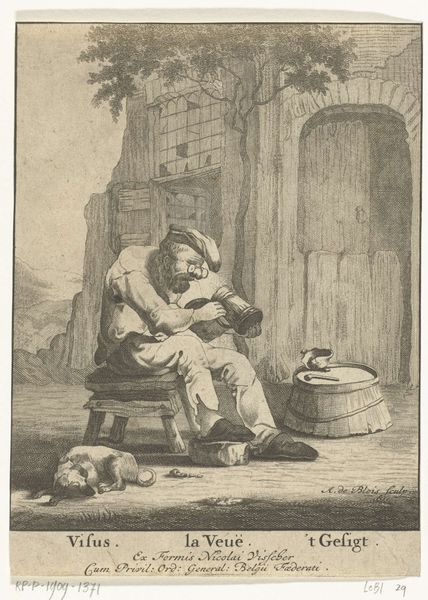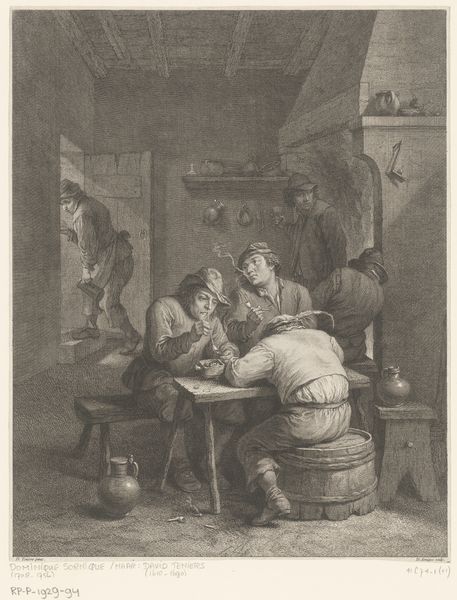
print, etching
#
dutch-golden-age
# print
#
etching
#
figuration
#
genre-painting
Dimensions: height 253 mm, width 180 mm
Copyright: Rijks Museum: Open Domain
Curator: Immediately I get a sense of a dark, humorous moment; all the faces have a knowing glint, despite the dim lighting. Editor: That's "The Youth," an etching and print made by Cornelis Dusart sometime between 1680 and 1704. You can currently find it here at the Rijksmuseum. The way Dusart manipulates line here is really striking, wouldn’t you agree? Curator: Absolutely, it’s a marvel of its medium, this etching manages a robust kind of genre painting feel with remarkable tonal variation. But I'm drawn to the narrative implications here, the glimpse into social life of the Dutch Golden Age. Editor: Look closer. It is what it is: an image laboriously created with acid on metal. What are the physical properties of the inks he's using here? The biting process, the number of plates... These material aspects determined the possibilities for social and visual messaging. Curator: I see it a bit differently; surely, there's intent. Notice the coupling figures to the right versus the trio engaged near the front. Are they related in a broader social commentary? I see that as the function of the image. Editor: Perhaps... but I also want to focus on how such images were disseminated, impacting viewership within local printing economies of scale and labor. The print functioned more like multiples. Curator: Well, in looking at this, it is easy to agree on it being quite the moment in time, if it reflects everyday realities in such taverns. It speaks volumes. Editor: Right. And knowing Dusart's methods makes you more appreciative of what the hand can do – its capacity for craft – regardless of whatever readings may be extracted.
Comments
No comments
Be the first to comment and join the conversation on the ultimate creative platform.
